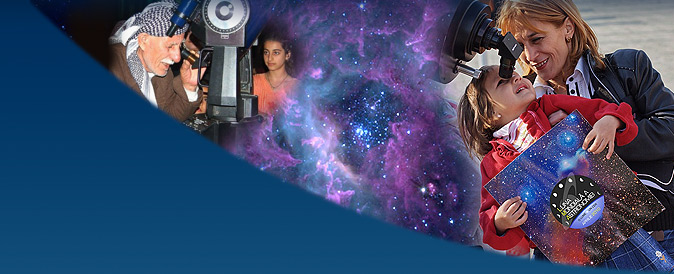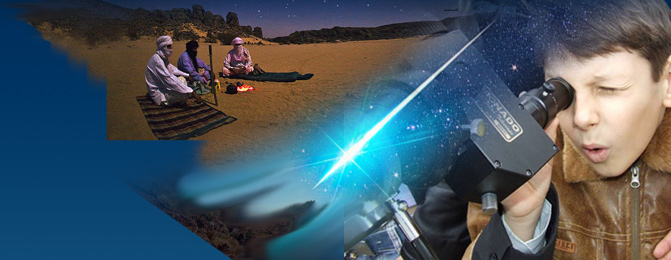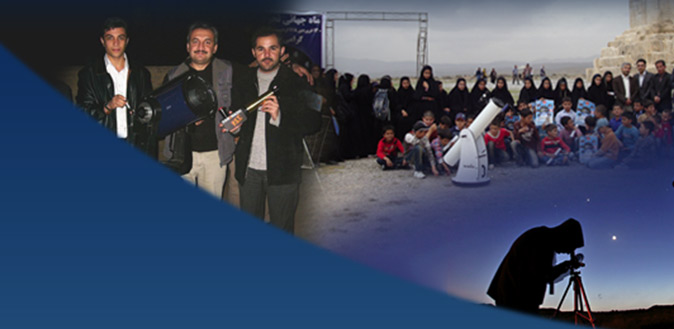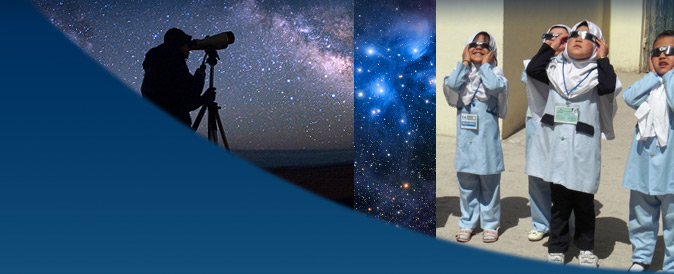The complete of all the resources being highlighted this month for Astronomy for All.
| Astronomy for Deaf and Hard-of-Hearing | ||
| Description | Type | |
| 1 | Captioning is the process of converting the audio content of a broadcast, webcast, video, live event, or other productions into text and displaying the text on a screen, monitor, or other visual display system and makes audio and audiovisual material accessible providing a critical link to communication, information and education (from National Association for the Deaf ). We encourage everyone to take a minute of their time and caption an astronomy resource and share with the community. Here you can find a few notes on Captioning for Youtube and a couple of useful tips on how to caption a video for free. | Resource/Best Practice |
| 2 | ESOcast - Almost 100 videocasts by the European Southern Observatory, with captions in many different languages | Resource |
| 3 | Crash Course Astronomy by Phil Plait - Phil Plait (AKA the Bad Astronomer) teaches you astronomy in a series of 47 videos with English captions (and many in other languages too). | Resource |
| 4 | BSL Glossary - Making Sense of Astronomy - "Making Sense of Astronomy" is a Scottish Government Talking Science grant-funded project, working with Deaf scientists and linguists to help make astronomy more accessible to the Deaf community by creating new British Sign Language specific to astronomy. | Resource/ Best Practice |
| 5 | The Incredible Two-Inch Universe - video podcasts - The Incredible Two-Inch Universe intends to explore the universe by shrinking cosmic scale in four steps, zooming out from the realm of the Earth and Moon to the realm of the galaxies. You can use this four-step scale model to imagine some of the distances involved in NASA's explorations of the Universe. | Resource |
| Astronomy for Blind or Visually Impaired | ||
| 6 | Modeling the Phases of the Moon Activity | Resource |
| 7 | Here, There & Everywhere (HTE) - developed by the Chandra X-ray Center (CXC), shows how our knowledge of familiar processes can be applied to help understand similar behaviour on grander scales, and in very different environments | Resource |
| 8 | Audio Podcasts - Chandra X-ray Observatory & its findings and Astronomy Cast | Resource |
| 9 | Star Map in Braille - This 1-meter star map shows stars visible to the naked eye which are located in the southern hemisphere. | Resource |
| 10 | Tactile Star Charts - Create Tactile Star Charts for everyone with this activity | Resource |
| 11 | Printable 3D models - There are many ready-to-print 3D models around the web that you will certainly find useful and fitting to your activities with all kinds of groups. From space exploration NASA’s repository, the more general 3D Warehouse, to a comprehensive astronomy oriented 3D repository on the IAU Astronomy for Equity and Inclusion website, they will allow you to cover many different topics in Astronomy by touching the ‘untouchable’. | Resource |
| Astronomy for People with Motor Impairments | ||
| 12 | Adaptive solutions for telescope observing sessions | Best Practice |
| 13 | History of the Universe - Build a timeline to discover the relative ages of the Universe, the solar system and the human evolution, on the scale of a year | Activity |
| 14 | Global campaigns - Being a part of global project provides a sense of belonging to vast community and empowers the users as to contribute in active meaningful ways. The problem of light pollution and the loss of our true night sky and contributing to these vast campaigns is a good way to engage different kinds of audiences. A good example of these activities are the “Globe at Night Activity Guide” and “How Light Pollution Affects the Stars: Magnitude Readers”. | Activity |
| 15 | Online TV Channels & Live Webcams - The High Definition Earth Viewing (HDEV) experiment aboard the ISS Live Webcam and the Online NASA TV Channel can be an amazing experience when shared on a large screen to different audiences. | Resource |
| Astronomy for People with Intellectual Impairments | ||
| 16 | g-ASTRONOMY - a collaboration between the Imperial College London astrophysicist Roberto Trotta and chef Jozef Youssef. | Best Practice |
| 17 | Constellations with glow-in-the-dark stars (EN/ES) - a fun easy way to can make your own constellations with glow-in-the-dark stars. | Resource |
| 18 | The Life of the Stars - interactive talk - The interactive talk ”The Life of the Stars” seeks to explain, in an easy to understand language, the life cycle of the stars to people with cognitive impairments. | Activity |
| 19 | Only Images - presentation - Only Images is a powerpoint presentation developed by the Astronomical Observatory of the University of Valencia and addressed mainly to people with cognitive impairments. | Activity |
| 20 | Sensations - presentation - The talk Sensations, is a powerpoint presentation specially developed for people with cognitive impairments | Activity |
| Astronomy for Minorities | ||
| 21 | Skies of the World - a multicultural experience implemented in Italy focused on communicating astronomy to nursery school and primary school children, within multicultural contexts using non-verbal languages | Best Practice |
| 22 | Astronomy as a motor of cultural and social integration - Universe Awareness as a motor of cultural and social integration in a German inner-city. The main goal of this program is to place children in contact with inspirational aspects of astronomy to amplify and change their vision of the world and the universe. | Best Practice |
| 23 | GalileoMobile documentaries - These inspiring documentaries about GalileoMobile outreach group that has been dedicating the past eight years to reaching out to different remote communities in the South American region, and in countries such as India and Uganda. | Best Practice |
| 24 | Discovery Club - In the first half of 2016, Universe Awarenss (UNAWE) implemented Discovery Club - an after-school Science, Technology, Engineering, Arts and Mathematics (STEAM) programme developed to inspire, educate and entertain children and parents in refugee centres. | Program |
| 25 | Hidden Figures - a book by Margot Lee Shetterly and a movie released in 2016, celebrates the behind the scenes contributions by hundreds of unheralded NASA workers, including "human computers" who did the calculations for the orbital trajectories of Mercury astronauts Alan Shepard, Gus Grissom and John Glenn | Resource |
| Astronomy For All | ||
| 26 | Evolving Universe materials - adapted from the Genesis Cosmic Chemistry: Cosmogony module for use by visually impaired students. | Activity/Resource |
| 27 | Basics of Astronomy Through Role Play - This is a handbook for science activists and teachers - describe authors T. V. Venkateswaran and Anshumala Gupta - and follows a Role Play technique to explain astronomical concepts not only to children but also adults | Activity |
| 28 | How to Make Presentations Accessible to All | Best Practice |
| 29 | Space Science Is for Everyone: Creating and Using Accessible Resources in Educational Settings - This is a collection of helpful hints and resources based on seven workshops that offered professional development training and resources for the teachers of students with disabilities, science educators (both formal and informal), and product developers who are working to make Earth and space science concepts more accessible for persons with disabilities. | Best Practice |
| 30 | Reach for the Stars: Touch, Look, Listen, Learn - Reach for the Stars presents learners with a new approach to astronomy, one that educates and inspires in ways no conventional materials can hope to match. | Resource |







